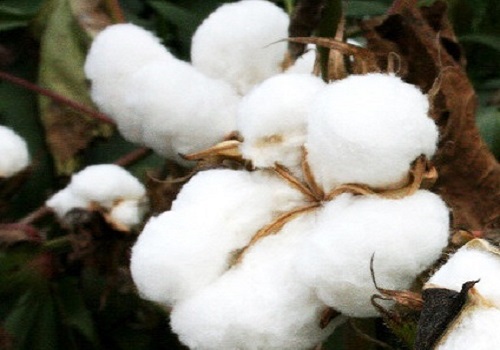U.S. Cotton Production Declines Amid Hurricane Helene`s Impact by Amit Gupta, Kedia Advisory

The U.S. cotton balance sheet for 2024/25 has been adjusted to reflect lower production, mill use, and exports due to Hurricane Helene's devastation. The USDA's October report reduced U.S. cotton production estimates by over 300,000 bales to 14.2 million. Georgia and North Carolina saw significant reductions, while other states had marginal gains. Mill use dropped by 100,000 bales to 1.8 million, and exports decreased by 300,000 bales to 11.5 million due to lower global demand. Ending stocks increased to 4.1 million bales, with no change to the season's average price of 66 cents per pound. Globally, world cotton production saw slight increases, although world trade dropped significantly due to lower Chinese imports.
Key Highlights
* U.S. cotton production lowered by 300,000 bales to 14.2 million.
* Hurricane Helene severely impacted crops in Georgia and North Carolina.
* Mill use reduced by 100,000 bales due to lower domestic demand.
* U.S. cotton exports fell by 300,000 bales as global demand weakens.
* World trade dropped over 500,000 bales due to China’s reduced imports.
U.S. cotton prices have been affected by a sharp decline in production for the 2024/25 season. The recent USDA report revised production down by over 300,000 bales to 14.2 million, primarily due to damage from Hurricane Helene. This decrease was particularly felt in Georgia and North Carolina, where high winds and heavy rains destroyed much of the cotton crop. However, some states experienced slight gains, helping partially offset the damage. The national yield estimate dropped 18 pounds per harvested acre to 789 pounds, signaling additional supply-side pressure on prices.
Mill use also faced a decline, down 100,000 bales to 1.8 million, driven by slowing demand from domestic mills. On the export front, weaker global import demand, particularly from China, forced a reduction in U.S. export estimates by 300,000 bales to 11.5 million. This reduction aligns with the global trend of declining cotton trade, which saw a drop of over 500,000 bales due to reduced Chinese imports.
Looking at the broader picture, world production has slightly increased due to higher yields in China, Brazil, and Argentina. However, the global ending stocks saw a slight reduction, and the 2024/25 cotton season is likely to face continued price pressures, especially with weaker global trade.
Finally
The 2024/25 U.S. cotton outlook reflects production challenges, weaker demand, and lower exports, with prices likely to remain under pressure.
Above views are of the author and not of the website kindly read disclaimer










More News

Quote on Crude and Gold 29th July 2025 by Kaynat Chainwala, AVP - Commodity Research, Kotak ...













